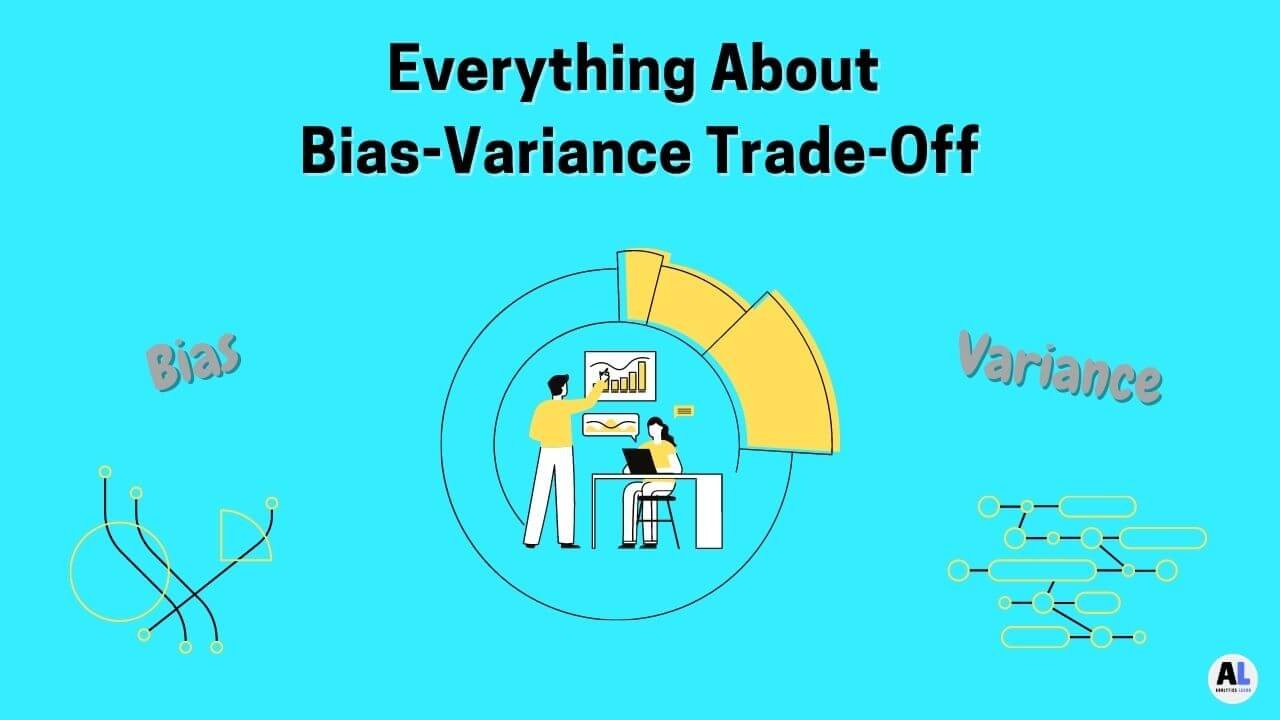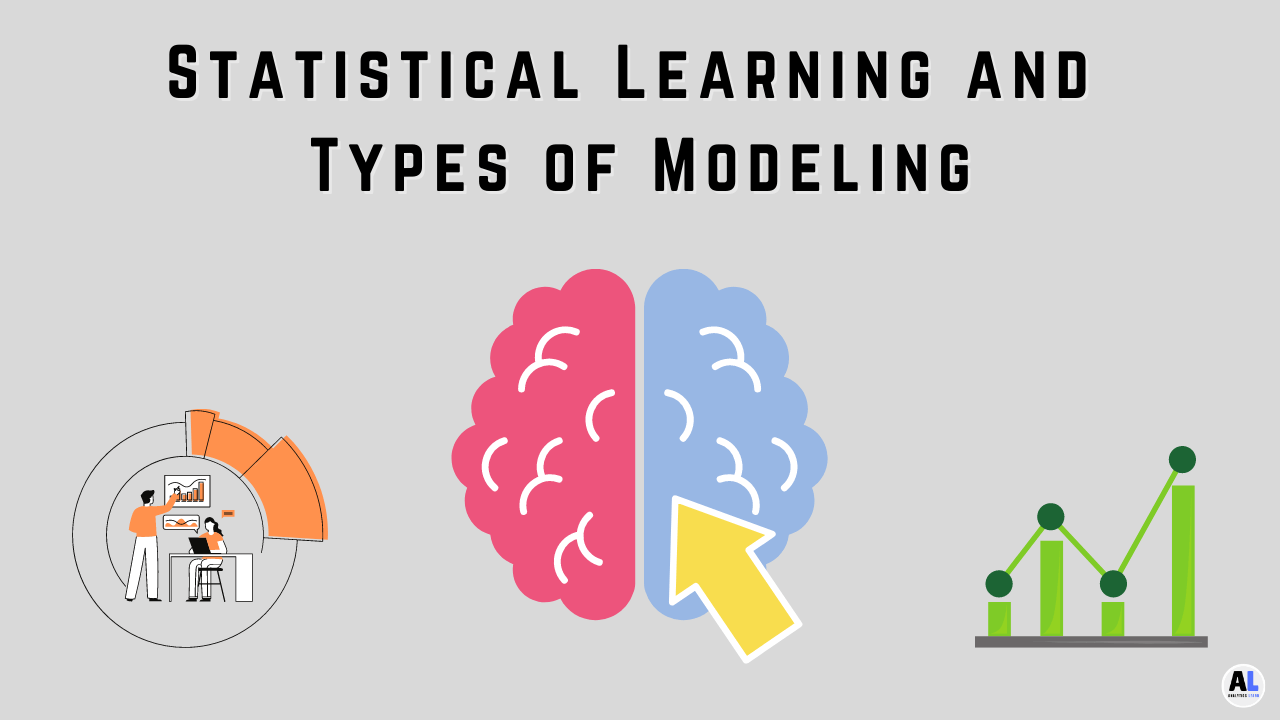In this article, we are going to understand the exact use and difference of bias and variance and what is bias-variance trade-off? What does it mean?
So before getting into the bias-variance trade-off, first let understand the bias, variance terminology, and what the exact use of each term is in the machine learning process.
Bias variance trade-off terminology contains a group of errors in statistical learning or machine learning processes like bias, variance, underfitting, overfitting, and regularization and its types.

What is Bias?
In simple work Bias is an error that can come in the model due to few reasons like the oversimplification of the algorithm used or does not fit the data properly.
It is the error introduces because of incorrect assumptions in the learning algorithm and the model is too simple, like the use of linear models when the data is available for non-linear modeling.
The high amount of bias in the model can miss the relevant relations between inputs and outputs, leading to underfitting.
There the few machine learning algorithms we are going to see which are require low bias or high bias including
1. Low bias algorithms contain Support vector machines, Decision Trees, k-NN etc.
2. High bias algorithms contain Linear Regression, Logistic Regression, etc.
What is Variance?
Variance is also known as an error that arrives in the model due to the high complexity in data and it can function well in the training dataset but poorly in the test dataset.
The high amount of variance in data can drive to high sensitivity and overfitting of model and that mostly results in several algorithms similar polynomial regression etc.
Commonly, as you increase the complexity in the ml model, you will see a reduction in error due to lower bias in the model, this simply happens unto a particular point.
If you proceed to make your model more complex, then you end up overfitting in the model and the model will start suffering from big variance.
What is Underfitting?
It is the predicted modeling output that has a High amount of bias and a low amount of variance that leads to the underfitting of a model.
This can happen because of the low amount of sample data or the misclassification of the model or the lack of information in data.
What is Overfitting?
Overfitting is a modeling error when the model we trained basically memorizes the data it has seen, which captures noise in the data and not the true underlying function.
One analogy to think about it is you have a test tomorrow and your teacher gave you last year’s test. Instead of studying the material on the test, you only studied last year’s test and memorized all the answers.
On the day of the test, you find out that the test is completely different. Memorizing last year’s test is essentially overfitting.
You don’t actually learn anything about the underlying topics on the test, so when presented with new questions about the topic, you cannot answer them well (also known as failing to generalize).
A model that only performs well on the training data is pretty much useless when presented with new information. Some ways to prevent overfitting are cross-validation and regularization.
What is Bias-Variance trade-off?
Any supervised machine learning algorithm aims to have low bias and low variance to produce a reliable predictive performance model.


K-Nearest Neighbor:
This algorithm has low bias and high variance, but the trade-off can be improved by increasing the value of k which doubles the number of neighbors that contribute to the prediction and in shift raises the bias of the model.
SVM:
This algorithm has low bias and high variance, but the trade-off can improve by expanding the C parameter that determines the number of violations of the margin provided in the training data which enhances the bias but reduces the variance.
Decision Tree:
If this ml algorithm has low bias and high variance then you can decrease the depth of the tree or apply fewer attributes.
Linear Regression:
If This ML algorithm has low variance and high bias then you can expand the number of features in the model or you can use another regression that better to fits the data.
Summary of Bias-Variance trade-off
There is no escaping the relationship between bias and variance in machine learning that means if you raise the bias in the model can minimize the variance and Increasing the variance can decrease bias or vise versa.
What is Regularization?
The main problem in machine learning is overfitting or when the model does not perform well on new data because it has essentially memorized the training data, this is because when the model is too complex.
Regularization prevents the model from becoming too complex by adding a tuning parameter that shrinks the coefficient estimates.
In machine learning contain two popular types of regularizations the first one is Lasso (L1) and the Second one is Ridge (L2).
Lasso (L1): This is the regularization method used adds the absolute value of the magnitude of coefficients as the penalty term in the model or to the loss function
Ridge (L2): This is the regularization method used to adds the square of the magnitude of coefficients as the penalty term to the loss represents the tuning parameter.
What is the Solution on Bias-Variance trade-off?
A huge amount of data or the large dimensions in data can generate a high amount of variance in data that can give you overfitting in the model after model building.
To handle the overfitting of the model and avoiding the Bias-Variance trade-off you can use feature selection techniques or you can perform dimensionality reduction techniques also.
There is a large amount of feature selection techniques are available in machine learning practices to avoid bias or variance issues.
Similarly, Principal component analysis, factor analysis kind of dimensionality reduction techniques can avoid complexity from data and give you few starting variables for the right modeling.
Conclusion
Bias and variance both are very crucial and essential errors in each machine learning model that keep the model well balanced.
Regularization is the advanced way to make the right balance in the model while penalizing the bias and variance vies-versa.
Recommended Articles:
What Is A Statistical Model? | Statistical Learning Process.
What Is Feature Engineering? – Use, Approach, Techniques
What Is A Supervised Learning? – Detail Explained
What Are The Types Of Machine Learning? – In Detail

Meet Nitin, a seasoned professional in the field of data engineering. With a Post Graduation in Data Science and Analytics, Nitin is a key contributor to the healthcare sector, specializing in data analysis, machine learning, AI, blockchain, and various data-related tools and technologies. As the Co-founder and editor of analyticslearn.com, Nitin brings a wealth of knowledge and experience to the realm of analytics. Join us in exploring the exciting intersection of healthcare and data science with Nitin as your guide.










